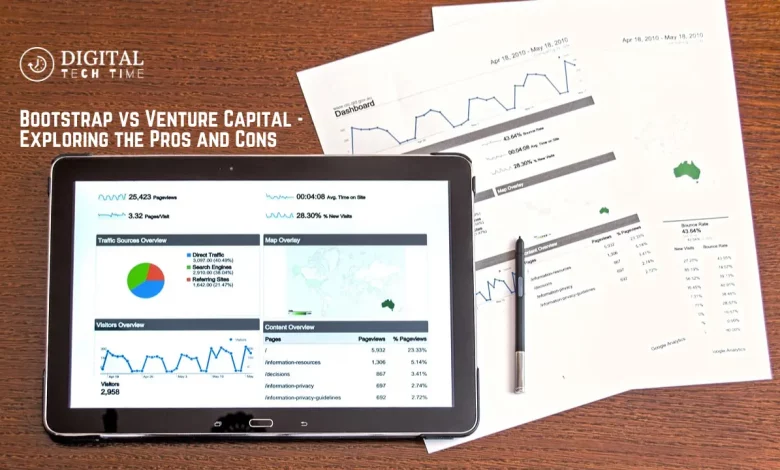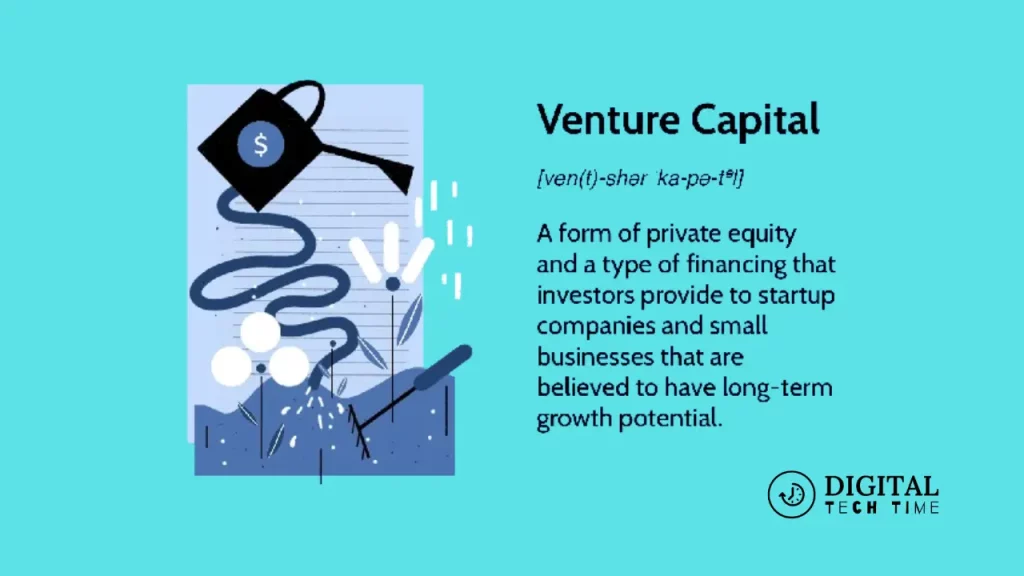Bootstrap vs Venture Capital – Exploring the Pros and Cons

As an experienced writer, I’m excited to explore the pros and cons of two distinct approaches to funding and growing a business: Bootstrap vs Venture Capital. Whether you’re a budding entrepreneur or an established business owner, understanding the nuances of these financing options can be a game-changer in your journey to success.
Table of Contents
Introduction
Navigating the world of business financing can be daunting, but making the right choice can significantly impact the trajectory of your venture. In this article, we’ll delve into the intricacies of Bootstrap and Venture Capital, examine their respective advantages and disadvantages, and help you determine the best path forward for your unique business needs.
What is Bootstrap?
Bootstrap, also known as self-funding or bootstrapping, refers to the practice of starting and growing a business using personal savings, loans, or revenue generated from the industry itself rather than relying on external investors or venture capital. This approach allows entrepreneurs to maintain full control over their company’s direction and decision-making processes.

Pros and Cons of Bootstrap
Pros of Bootstrap:
- Maintain Control: With Bootstrap, you retain complete control over your business, making all the critical decisions without the influence of external investors.
- Avoid Debt: You can avoid taking on debt by using your own resources or revenue, which can be a significant burden for a growing business.
- Gradual Growth: Bootstrapping encourages a more measured, sustainable growth approach, allowing you to scale your business at a pace that aligns with your resources and goals.
- Flexibility: Bootstrapping allows you to pivot and adjust your business strategy as needed without the constraints of investor expectations.
Cons of Bootstrap:
- Limited Resources: Relying solely on personal savings or revenue can limit the amount of capital available for investment in growth, marketing, and expansion.
- Slower Growth: The pace of growth may be slower compared to businesses that have access to venture capital or other external funding sources.
- Increased Workload: Bootstrapping often requires the founder to wear multiple hats and take on a heavier workload to manage all aspects of the business.
- Potential Burnout: The sustained effort necessary for bootstrapping can lead to increased stress and the risk of founder burnout.
What is Venture Capital?
Venture Capital (VC) refers to the financing provided by investors, typically venture capital firms or angel investors, to startups and early-stage companies with high growth potential. These investors offer capital in exchange for equity or ownership stakes in the business.

Pros and Cons of Venture Capital
Pros of Venture Capital:
- Access to Substantial Funding: Venture capitalists can provide significant amounts of capital to fuel rapid growth and expansion.
- Expertise and Guidance: VC firms often bring valuable industry knowledge, networks, and strategic guidance to help startups navigate the challenges of scaling a business.
- Validation and Credibility: Securing venture capital investment can lend credibility to your business and open doors to new opportunities.
- Accelerated Growth: With access to substantial funding, VC-backed companies can often scale their operations and reach much faster than bootstrapped businesses.
Cons of Venture Capital:
- Loss of Control: By accepting venture capital, you relinquish a portion of your ownership and decision-making power to the investors.
- Pressure to Perform: VC-backed companies face intense pressure to meet aggressive growth targets and milestones, which can be challenging to maintain.
- Dilution of Ownership: Each round of venture capital investment typically results in further dilution of the founder’s equity stake in the company.
- Potential Conflicts: Misalignment between the founder’s vision and the investors’ interests can lead to conflicts and strategic disagreements.
Factors to Consider When Choosing Between Bootstrap and Venture Capital
When deciding between Bootstrap and Venture Capital, it’s essential to carefully evaluate your business goals, growth aspirations, and personal preferences. Consider factors such as:
- Financial Needs: Assess the capital required to fund your business’s growth and expansion plans. If your funding needs exceed your resources, venture capital may be a more viable option.
- Growth Trajectory: Determine whether you aim for rapid, aggressive growth or a more measured, sustainable approach. Venture capital is often better suited for businesses with high-growth potential, while Bootstrap may be more appropriate for those seeking gradual, organic growth.
- Control and Autonomy: Evaluate how much control and decision-making power you’re willing to relinquish. Bootstrap allows you to maintain full control, while venture capital investment typically involves some level of shared control with investors.
- Risk Tolerance: Consider your appetite for risk. Venture capital investments often come with higher risk but also the potential for greater rewards. Bootstrapping may be a better fit for risk-averse entrepreneurs.
- Industry and Market Conditions: Analyze the competitive landscape and industry trends to determine the most appropriate financing approach. Certain industries or markets may be more receptive to venture capital investment than others.
Success Stories of Bootstrap Companies
Despite the challenges, many successful companies have chosen the Bootstrap path and achieved remarkable growth and profitability. Examples include Basecamp, Mailchimp, and Craigslist, all of which have thrived without relying on venture capital.

Success Stories of Venture Capital-Backed Companies
Conversely, numerous companies have benefited from the significant funding and strategic guidance provided by venture capitalists. Notable examples include Amazon, Google, and Facebook, which have all experienced exponential growth and market dominance with the support of VC investment.
Also Read: Navigating ATCI Service: How It Benefits Your Android Phone
Case Studies Comparing Bootstrap and Venture Capital Approaches
To further illustrate the differences between these two financing options, let’s examine a few case studies:
Case Study 1: Bootstrap vs. Venture Capital in the Software Industry
- Company A: Bootstrapped software startup that focused on sustainable growth and profitability.
- Company B: Venture capital-backed software company that prioritized rapid expansion and market share.
Comparison:
- Company A maintained full control and ownership but experienced slower growth.
- Company B secured substantial funding, enabling faster growth, but faced increased pressure to meet investor expectations.
Lesson Learned: The choice between Bootstrap and Venture Capital can significantly impact a company’s growth trajectory, decision-making, and overall success.
Case Study 2: Bootstrap vs. Venture Capital in the Retail Industry
- Company C: A bootstrapped retail business that emphasized quality, customer service, and organic growth.
- Company D: Venture capital-backed retail chain that aggressively expanded its footprint and product offerings.
Comparison:
- Company C maintained a loyal customer base and sustainable profitability.
- Company D experienced rapid growth but faced challenges with operational efficiency and customer satisfaction.
Lesson Learned: The financing approach can shape a company’s focus, culture, and ability to adapt to changing market conditions.
Frequently Asked Questions
Q: Can a company switch from Bootstrap to Venture Capital (or vice versa) during its lifecycle?
A: Yes, a company can transition from Bootstrap to Venture Capital or vice versa, depending on its evolving needs and growth stage. However, such a transition can be complex and may require careful planning and negotiation with investors or stakeholders.
Q: Is there a ‘right’ or ‘wrong’ choice between Bootstrap and Venture Capital?
A: There is no universal ‘right’ or ‘wrong’ choice between Bootstrap and Venture Capital. The most appropriate financing approach depends on the specific goals, resources, and circumstances of the business. The key is to carefully evaluate the pros and cons of each option and make an informed decision that aligns with your long-term vision and priorities.
Q: Can a company use a combination of Bootstrap and Venture Capital?
A: Yes, a company can utilize a hybrid approach, leveraging both Bootstrap and Venture Capital financing. This can involve starting with Bootstrap to establish the business and then seeking venture capital investment for specific growth initiatives or expansion plans.
Conclusion
In the end, the choice between Bootstrap and Venture Capital will depend on your business goals, risk tolerance, and personal preferences. Both approaches have merits and challenges, and the right decision will depend on your unique circumstances and aspirations.
If you still need to decide which financing path to take, consider speaking with a business advisor or financial expert who can provide personalized guidance based on your specific situation. They can help you navigate the complexities and make an informed decision that will set your business up for long-term success.





